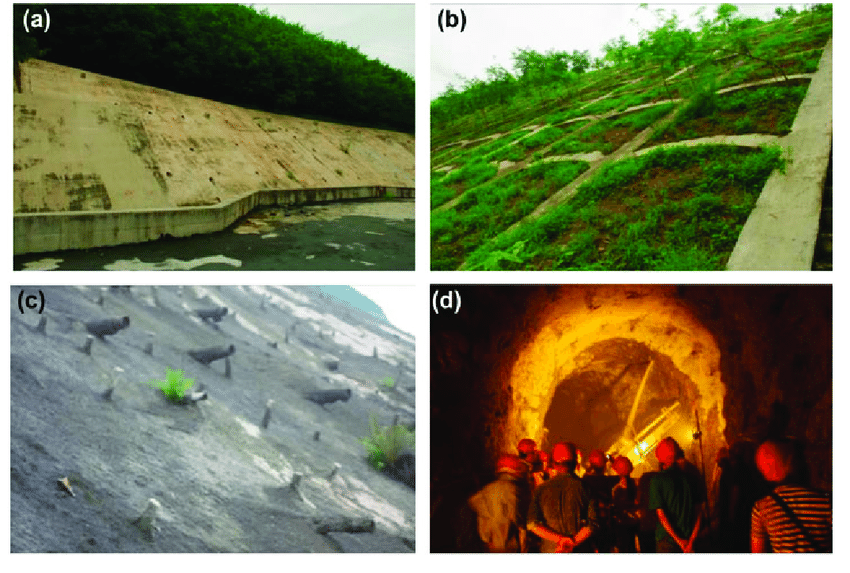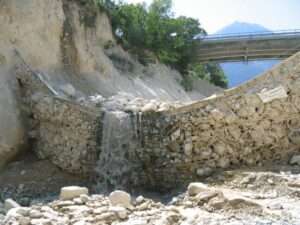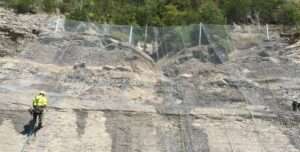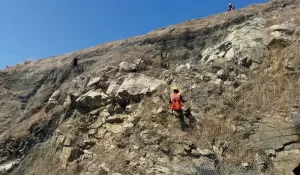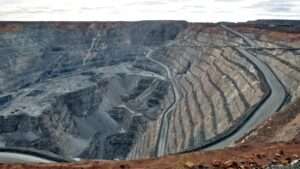Cable anchor systems play a pivotal role in the reinforcement of slopes and the stabilization of structures. These systems provide a robust and flexible solution to stabilize soil, rock masses, and other geotechnical structures that are prone to shifting or failure. This article delves into the various applications, advantages, and best practices for using cable anchors in slope reinforcement and structural support.
1.Understanding Cable Anchor Systems
Cable anchors are used to secure and stabilize slopes, retaining walls, and foundations by transferring loads from the unstable surface into deeper, more stable soil or rock layers. They typically consist of a steel cable, often sheathed in protective material, that is tensioned and fixed in place using anchor plates or other anchoring devices. The tension in the cable improves the shear strength of the soil or rock, enhancing the overall stability of the slope or structure.
- Applications of Cable Anchors
Slope Reinforcement
Cable anchors are commonly used in slope stabilization, particularly for steep or unstable slopes prone to erosion or landslides. The anchors work by transferring the forces that could destabilize the slope to deeper, more resistant strata. By securing the upper layers of soil or rock, cable anchors help prevent soil movement, rockfalls, or landslides, especially in areas with high seismic activity or extreme weather conditions.
Retaining Walls and Earth Structures
In earthworks and retaining wall construction, cable anchors can provide essential support to structures under tension. For example, in the case of gravity walls or cantilevered walls, anchors help resist lateral forces and prevent tilting or collapse. By securing the retaining wall to the underlying stable soil, these systems add significant strength and longevity to the structure.
Foundation Stabilization
Cable anchors are often used to reinforce foundations in situations where the soil conditions are not ideal. For instance, in weak or loose soils, anchors can be installed to transfer the load from the foundation to more stable rock or deep soil layers. This technique is especially useful in areas with poor soil quality or where the depth to stable strata is considerable.
Rockfall Protection
Cable anchors are frequently part of rockfall mitigation systems, where they are used to secure loose rocks and prevent rockslides from occurring. By anchoring large rock masses to the hillside or other stable surfaces, cable anchors reduce the likelihood of rockfall incidents, which can be hazardous to infrastructure and human safety.
3.Advantages of Cable Anchor Systems
Flexibility and Versatility
One of the primary advantages of cable anchor systems is their versatility. They can be adapted to a wide range of applications, including steep slopes, foundations, retaining walls, and rockfall protection. Cable anchors are also effective in varying soil conditions, from soft clays to hard bedrock, making them suitable for diverse geological environments.
Cost-Effectiveness
Cable anchors offer a cost-effective solution for many stabilization and reinforcement projects. Compared to traditional methods, such as massive retaining walls or soil replacement, cable anchors are less expensive and can be installed more quickly. This leads to significant savings in terms of materials and labor, particularly for large-scale or time-sensitive projects.
4.Minimal Environmental Impact
Since cable anchors are installed with minimal disruption to the surrounding environment, they are an environmentally friendly option for slope stabilization. The installation process typically requires only small amounts of excavation, which helps to preserve the natural landscape. Additionally, cable anchors do not require large amounts of concrete or other invasive materials, reducing their ecological footprint.
Long-Term Durability
Cable anchors are designed for durability and long-term performance. The use of corrosion-resistant materials, such as galvanized steel or stainless steel, ensures that the anchors remain functional for many years. This makes cable anchor systems a reliable solution for long-term stability, even in challenging environmental conditions.
5.Installation and Best Practices
Site Assessment
Before installing cable anchor systems, a thorough geotechnical survey should be conducted to assess the soil or rock conditions. Understanding the ground’s stability, soil composition, and potential stressors is essential for determining the optimal design and installation procedure.
Anchor Design
The design of cable anchor systems must be tailored to the specific requirements of each project. Key factors include the type of load to be supported, the depth and angle of the anchors, and the tension to be applied. A well-designed anchor system ensures maximum stability and performance.
Quality Control
To ensure the system’s effectiveness, high-quality materials and precision installation are critical. Proper testing and monitoring of the anchors should be conducted during and after installation to verify that the tension levels are appropriate and that the anchors are securely fixed in place.
Regular Inspection and Maintenance
Cable anchor systems should undergo regular inspections to monitor their performance. Over time, anchors may experience corrosion, tension loss, or other forms of wear, especially in aggressive environments. Regular maintenance and re-tensioning ensure the continued stability of the system.
Conclusion
Cable anchor systems are an essential tool in slope reinforcement and structural support. Their ability to provide stable, cost-effective, and flexible solutions to a variety of geotechnical challenges makes them invaluable in many fields of construction, infrastructure, and environmental protection. By understanding their applications, advantages, and best practices, engineers and contractors can use cable anchor systems to enhance the safety and durability of slopes, foundations, and retaining walls.


